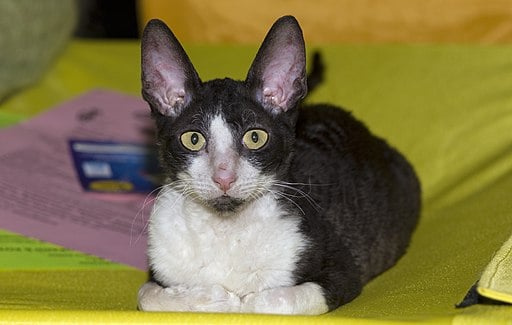
Knowing the common diseases of the Cornish Rex is the first step to making this cat’s life long and peaceful: here are what they are.
How to protect the health of your four-legged friend, to ensure that the days that this little furry friend spends by our side are numerous and all splendid? Prevention is a must: for this reason, it is necessary to know what are the common diseases in the Cornish Rex, to be able to identify them promptly and make sure that our cat regains his strength as soon as possible.
Common Cornish Rex Diseases: The Complete List

The Cornish Rex is a long-lived cat. The average life span is between 12 and 15 years.
In any case, also by virtue of its peculiar coat, this cat is predisposed to the onset of a series of diseases, mainly of a hereditary nature.
Common diseases of Conrnish Rex include:
- Progressive retinal atrophy
- Hypertrophic cardiomyopathy
- Skin disorders
Progressive retinal atrophy
Progressive retinal atrophy is one of the common diseases in the Cornish Rex.
This eye disease is transmitted genetically from one generation to the next.
Unfortunately, it is a degenerative disease, which appears around 3-4 years of life of the cat and manifests itself through the following symptoms:
- Dilated pupils
- Obesity
- Hypersensitivity to light
- Night blindness, which later becomes complete
- Loss of peripheral or central vision
- Structural anomalies of the retina
There is no therapy that can cure the cat of progressive retinal atrophy.
Therefore, what we can do is simply get the cat to get used to the condition, providing an environment that can facilitate it, as well as keeping the quality of its life high.
Hypertrophic cardiomyopathy
Among the common diseases of the Cornish Rex is hypertrophic cardiomyopathy.
It is a hereditary heart disease, which involves the thickening of the walls of the left ventricle.
This, in turn, hinders normal blood circulation, leading to heart failure, pulmonary edema, and arterial thromboembolism.
Unfortunately, it is not always possible to identify it through unambiguous symptoms. Sometimes the cat may exhibit the following clinical signs:
- Tachycardia
- Heart murmur
- Dyspnea
- Decreased appetite
- General malaise
To date, there is no definitive cure for hypertrophic cardiomyopathy. For this, prevention is essential.
Through echocardiographic screenings, in fact, the sick specimens can be identified and forbidden from reproduction.
Skin disorders
Finally, skin disorders close the list of common diseases in the Cornish Rex.
The skin of this cat, in fact, is extremely delicate and sensitive. For this, in the first place it is necessary to protect it from exposure to sunlight, which would risk causing burns and irritation.
Equally important is washing the Cornish Rex often, as its skin tends to produce excess sebum which, if not properly removed, could cause infections such as dermatitis and warts.
Finally, given that the coat of the specimens of this breed is thinned, the need to keep the cat’s skin away from cold and low temperatures should not be underestimated.
To do this, coats and sweaters are extremely useful, even made with our hands to obtain a splendid personalized result.
For all the essential information that will allow you to take better care of the Cornish Rex, consult this article.






